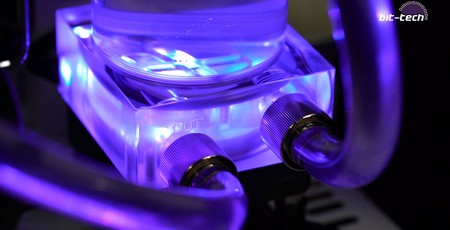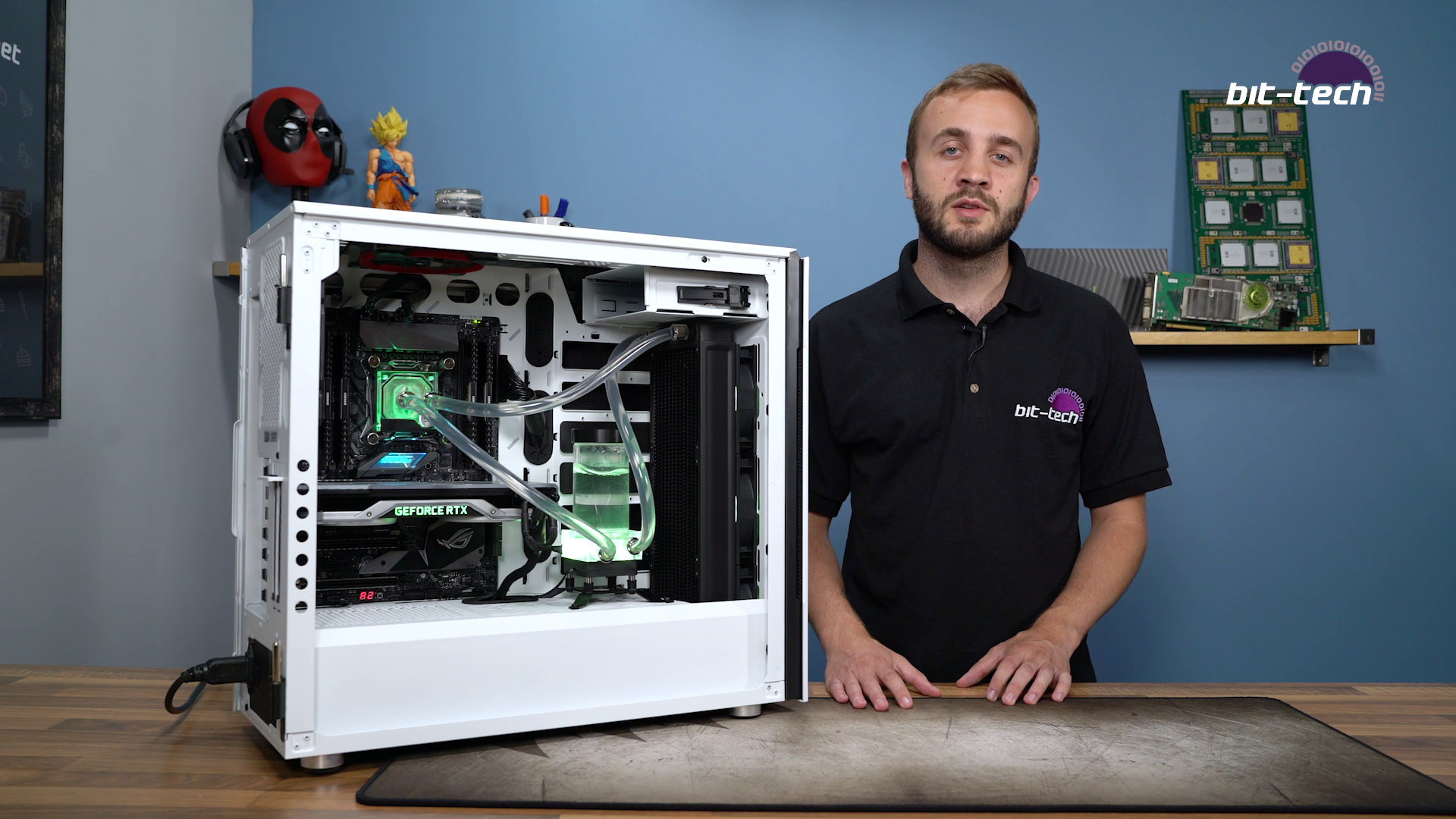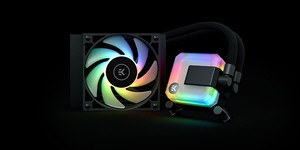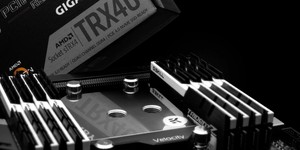
Test Setup
While we'd normally test a CPU cooler in up to four separate test systems depending on what sockets are supported, the custom and complex nature of a water-cooling kit means we focus our attention on just one: LGA 2066. We've also ditched the Corsair Graphite 730T as our test case and instead use the Corsair Carbide Series 678C, which allows us to simulate both high- and low-airflow situations thanks to its front door. This unfortunately means that results from other coolers aren't directly comparable to results of water-cooling kits, but given that the CPU and the overclock are identical, the results from our regular LGA 2066 cooler testing are still highly relevant, and we'll point our suitable comparisons in the Performance Analysis section.
Custom kits are installed in a fully assembled system to replicate a realistic scenario. The Corsair Carbide 678C is spacious enough to handle the sorts of radiators you're likely to get in a kit. We use the front mounting area for the radiator, as it both has space for thicker radiators than the roof and allows us to vary results by testing with the front door both open and closed. Radiator fans are mounted as intakes, pushing air across the radiator further inside the case. There is also a rear 140mm fan and a roof 120mm fan, both of which are fixed at 12V/full speed. The radiator fans, meanwhile, are tested at a variety of fan speeds to help us gauge the impact of different levels of airflow.
We place the test rig under load using the small FFTs stress test in the free application Prime95 26.6, as this test is designed to place maximum load on the CPU. We use the free application HWMonitor to measure the temperature and frequency of our CPUs. We always take the maximum individual core temperature for consistency and do so after 15 minutes, which is enough time for temperatures to plateau.
The results provided are the delta T results i.e. the difference between the recorded CPU temperature and ambient temperature at the time of testing. Our labs are not temperature-controlled, so this provides the most accurate method of comparison for coolers tested on different days. Any cooler that causes one of our CPUs to reach its thermal limit (105°C) and downclock or turn off is considered a fail.

Intel LGA 2066 Test System (18-Core)
- Intel Core i9-7980XE overclocked to 4GHz using a vcore of 1.1V
- Asus ROG Strix X299-E Gaming
- 4 x 4GB Corsair Vengeance LPX 3,200MHz DDR4
Results

MSI MPG Velox 100R Chassis Review
October 14 2021 | 15:04








Want to comment? Please log in.